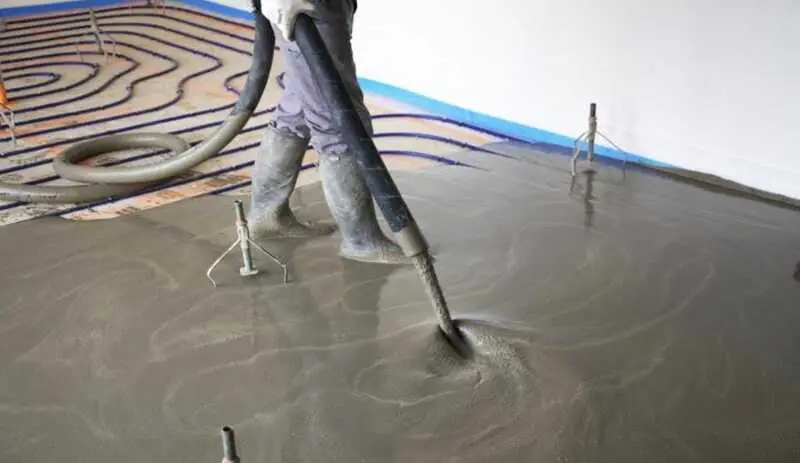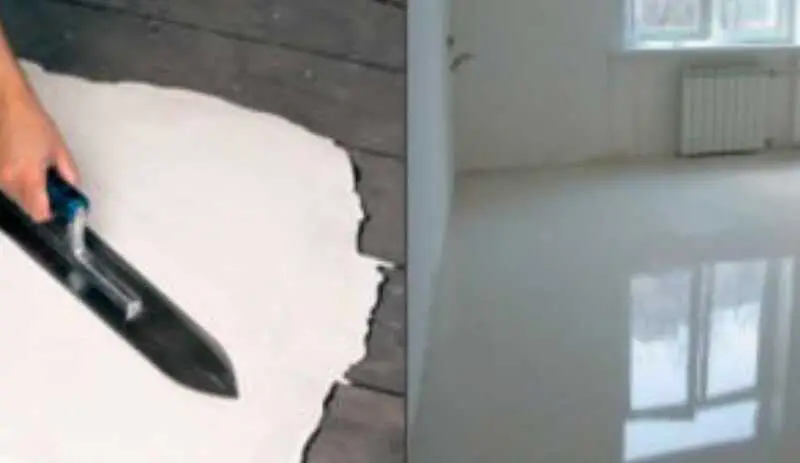Self-leveling compounds are a versatile construction and remodeling material used to create flat, uniform surfaces on floors, roofs, and other structures. These compounds consist of a mixture of resins, water and other materials that are applied to a previously prepared surface and expand on their own to create a smooth, even surface. In this article you will be able to validate what it is, what are its characteristics and what is the cheapest alternative to self-leveling compound.
Self-leveling compounds have become very popular in construction and remodeling because of their ability to create uniform surfaces in minimal time. In addition, they are easy to apply and require very little physical effort compared to other construction techniques. In addition, self-leveling compounds are tough and durable, making them ideal for a wide range of construction and remodeling projects, from bathroom and kitchen floors to large ceilings.

The use of self-leveling composites also offers the advantage of greater energy efficiency compared to other building materials, as they do not require additional heating and lighting for application. This makes them ideal for sustainable construction projects, and their application can help reduce costs and carbon emissions in construction.
Self-leveling compounds are a valuable tool in construction and remodeling because of their ability to create uniform surfaces quickly and easily, their strength and durability, and their energy efficiency. With their wide range of applications and multiple advantages, it is easy to understand why self-leveling compounds have become a popular and versatile building material in the construction and remodeling industry.
Analysis of the costs of self-leveling compounds and the reasons why they can be expensive.
Self-leveling compounds can be expensive due to several factors, including the ingredients used in their manufacture, manufacturing processes and market demand. In addition, self-leveling compounds often require a higher initial investment than other building materials, such as gypsum or concrete slab, for example.
However, despite the upfront costs, many construction and remodeling professionals believe that self-leveling compounds offer long-term value due to their high quality and durability. In addition, self-leveling compounds can reduce long-term costs due to the lack of need for frequent re-applications or repairs.
Another factor that influences the cost of self-leveling compounds is the quality and performance of the mixture. By choosing a poor quality self-leveling compound, the expected performance may not be achieved and the material may need to be replaced sooner than expected. On the other hand, choosing a high-quality self-leveling compound may be more expensive initially, but is likely to last longer and provide better long-term performance.
In conclusion, the costs of self-leveling compounds can vary depending on several factors, including the quality of the ingredients, market demand and the need for a high-quality product. Although they may be expensive initially, many construction and remodeling professionals believe that self-leveling compounds offer long-term value due to their high quality and durability.
Cheaper alternatives to self-leveling compound, such as cement-sand mix, concrete slab, gypsum, among others.
In order to accomplish the task of choosing the cheapest alternative to self-leveling compound, there are several less expensive alternatives available for those looking to avoid the cost of such compounds. One of the most popular options is cement-sand mixture, which is a basic building material commonly used in many construction and remodeling projects. Cement-sand mix is affordable and easy to obtain, making it an attractive option for those looking to save money on their projects.

Another economical alternative is concrete slab, which is a durable building material commonly used in flooring and roofing. Concrete slab is an economical option that offers solid performance and long-lasting durability. However, it is important to note that concrete slab can be more labor intensive than other materials, which can increase the overall cost of the project.

Gypsum is also one of the least expensive alternatives to self-leveling compounds. Gypsum is a basic building material used to make wall and ceiling coverings. Like cement-sand mixture, plaster is affordable and easy to obtain, making it an attractive option for those looking to save money on their projects.
How to properly apply each alternative and tips for a uniform, high quality finish.
Properly applying each self-leveling compound alternative requires some knowledge and skill, as well as the use of the proper equipment and tools. Here are some tips to help you obtain a uniform, high-quality finish when applying each alternative:
Mixing cement and sand: To properly apply the cement and sand mixture, it is important to follow a specific cement to sand ratio. A mixture of 1-part cement and 3 parts sand is a good ratio to start with. Be sure to mix the cement and sand thoroughly to obtain a uniform, lump-free consistency.
Concrete slab: When applying a concrete slab, it is important to make sure that the surface it will be applied to is level and clean. It is advisable to use a level to check that the surface is level before placing the concrete slab. In addition, it is important to allow the concrete to set and cure properly before walking or placing objects on it.
Plaster: When applying plaster, it is important to make sure that the surface to be plastered is clean and free of dust and grease. It is also important to follow the manufacturer’s instructions for mixing the plaster properly. It is advisable to apply several coats of plaster to obtain a uniform, high quality finish.

In addition to these general tips, it is important to follow the manufacturer’s instructions and take into account the specific conditions of each project to obtain the best possible result. When choosing a self-leveling compound alternative, it is important to consider both the cost and the quality and durability of the material. With a little practice and attention to detail, it is possible to obtain a uniform, high-quality finish with any of these economical alternatives to self-leveling compounds.
Conclusion.
In conclusion, cheaper alternatives to self-leveling compound play an important role in construction and remodeling by providing a more economical option for achieving a uniform, high-quality finish on horizontal surfaces. These alternatives include cement-sand mixtures, concrete slabs, gypsum and other similar materials that are more affordable than self-leveling compounds.
Although these alternatives may require a little more skill and knowledge to apply correctly, the end result can be surprisingly similar to that of self-leveling compounds. In addition, by choosing a less expensive alternative, it is possible to save money on the budget of a construction or remodeling project, which can be a great advantage for many individuals and businesses.
In summary, cheaper alternatives to self-leveling compound are an excellent choice for those looking to achieve a uniform, high-quality finish without spending too much money. With a little practice and attention to detail, it is possible to achieve amazing results and save money in the process.
